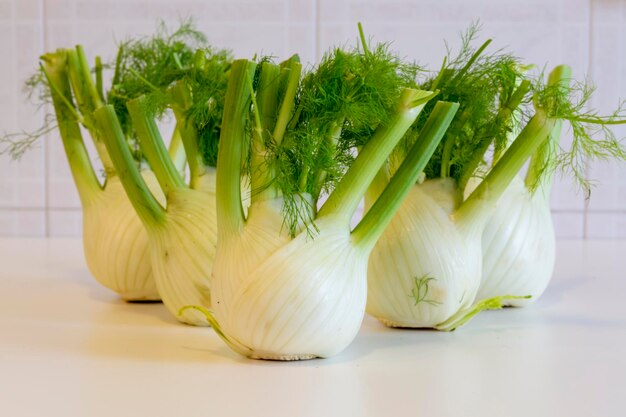Fennel (Foeniculum vulgare) is a versatile herb widely used in culinary applications, as well as in traditional medicine. It thrives in temperate and Mediterranean climates, making it well-suited to various regions in South Africa. This article outlines the entire process of growing fennel, from seed to harvest, while covering key aspects such as land preparation, soil types, fertilizers, irrigation, pests, and diseases.
1. Land Preparation and Soil Requirements
Fennel prefers well-drained, fertile soils that are rich in organic matter. The ideal pH for fennel is slightly acidic to neutral, ranging from 6.0 to 7.0. Prior to planting, proper land preparation is crucial for optimal growth.
- Clearing the Land: Begin by clearing the land of weeds, rocks, and debris. Use a tractor or hand tools, depending on the scale of your operation.
- Soil Testing: Conduct a soil test to determine the pH and nutrient content. This will help you decide on the necessary soil amendments.
- Soil Amendments: If the soil is acidic, add lime to raise the pH. For soils lacking in organic matter, incorporate compost or well-rotted manure to improve soil structure and fertility.
- Tilling: Use a tractor or plough to till the soil to a depth of 15 to 20 cm, breaking up clumps and creating a fine, smooth seedbed.
Fennel can be grown on a variety of soils, but it performs best in sandy loams or loamy soils that are well-drained but retain moisture. Heavy clay soils should be avoided, as they can lead to root rot.
2. Planting Fennel Seeds
Fennel can be grown from seed, and it is essential to plant at the right time to ensure a successful crop. In South Africa, fennel can be grown year-round in most regions, although late spring or early summer is the best time to plant for optimal growth.
- Spacing: Fennel plants require adequate space for their large root system and leafy growth. Plant seeds 2-3 cm deep, with a spacing of 30 cm between each plant and 30-45 cm between rows. This allows enough air circulation and room for the plants to mature.
- Seed Rate: Approximately 4 to 5 kg of fennel seeds are needed to plant 1 hectare, depending on the desired spacing.
- Seeding Equipment: For small-scale planting, hand sowing is sufficient, but for larger areas, use a mechanical seeder or planter.
3. Watering and Irrigation
Fennel requires a moderate amount of water. While it is drought-tolerant once established, consistent moisture is essential for good seedling growth and bulb development.
- Watering Frequency: Initially, water the seedlings regularly to maintain a consistently moist environment. As the plants mature, reduce watering frequency to prevent waterlogging.
- Irrigation System: Drip irrigation is the most efficient method for fennel, as it provides a steady supply of water to the root zone without wetting the foliage, reducing the risk of fungal diseases. Alternatively, furrow or overhead irrigation can be used, though the latter may increase disease pressure.
- Watering Amount: Fennel requires about 25-30 mm of water per week. Monitor the soil moisture to avoid both over-watering and drought stress.
4. Fertilization
Fennel is a relatively heavy feeder and will benefit from a balanced fertilization program.
- Before Planting: Apply well-rotted manure or compost before planting to enrich the soil with nutrients. Additionally, incorporate a balanced granular fertilizer that includes nitrogen (N), phosphorus (P), and potassium (K).
- During Growth: Fennel plants respond well to nitrogen, especially during the early growth stages. Apply a side-dressing of nitrogen fertilizer (such as ammonium nitrate) when the plants are about 30 cm tall. You can also apply a complete fertilizer at intervals to ensure continuous nutrient availability.
- Avoid Over-Fertilization: Excessive nitrogen can lead to excessive leaf growth at the expense of bulb formation, so it’s important to maintain a balanced approach.
5. Weed Control
Weeds can compete with fennel for nutrients, water, and light, so effective weed control is necessary.
- Manual Weeding: For small-scale growers, manual weeding is often sufficient, especially when plants are young.
- Mulching: Apply organic mulch around fennel plants to reduce weed growth and conserve moisture.
- Herbicides: If weeds become a significant problem, use herbicides that are safe for fennel. Apply pre-emergence herbicides before the fennel seeds germinate or use post-emergence options if weeds appear after germination. Always follow the manufacturer’s instructions.
6. Pest and Disease Management
Fennel is relatively hardy, but like all crops, it can be susceptible to various pests and diseases.
Common Pests:
- Aphids: Aphids can be a problem, especially on young fennel plants. They feed on plant sap and can spread viral diseases.
- Management: Use insecticidal soap or neem oil, or introduce natural predators such as ladybugs or lacewing larvae to control aphid populations.
- Cabbage Worms and Caterpillars: These pests can damage fennel leaves.
- Management: Apply organic insecticides like pyrethrum or use floating row covers to protect plants from insect damage.
- Root Maggots: These pests attack the roots, causing damage and reducing plant vigor.
- Management: Apply insecticidal treatments to the soil or use biological control agents.
Common Diseases:
- Fusarium Wilt: Caused by a soil-borne fungus, this disease affects the root system and causes yellowing of the leaves.
- Management: Rotate fennel with other crops, and avoid planting in the same soil year after year. Use resistant varieties if available.
- Downy Mildew: A fungal disease that appears as yellow spots on the leaves.
- Management: Remove infected plants, practice crop rotation, and apply fungicides when necessary.
- Powdery Mildew: A fungal infection that causes a white powdery coating on leaves.
- Management: Use fungicides, and ensure good air circulation to reduce humidity around the plants.
Use pesticides or fungicides only when necessary and according to the manufacturer’s guidelines to avoid harming beneficial insects or pollinators.
7. Harvesting Fennel
Fennel is typically harvested once the bulbs (if growing for bulb fennel) or leaves (if growing for culinary use) have reached a mature size.
- For Bulb Fennel: Harvest when the bulbs are large, firm, and have a diameter of around 10-15 cm. Gently pull the plants from the ground, or use a hoe to lift them.
- For Leaf Fennel: If you’re growing fennel for its fronds, start harvesting the leaves when they are well-formed but before the plant flowers. Cut the fronds with sharp scissors, leaving the plant to continue growing.
Fennel can be harvested by hand or mechanically using specialized harvesting equipment, depending on the scale of production.
8. Post-Harvest Handling and Storage
After harvesting, fennel must be stored carefully to preserve its quality.
- Bulb Fennel: Remove any soil and trim the leaves before storage. Store fennel bulbs in a cool, dry place with good ventilation. For long-term storage, you can refrigerate fennel bulbs, where they will last for up to two weeks.
- Leaf Fennel: If the fronds are to be used fresh, they can be bundled and refrigerated. Alternatively, fennel can be dried, though this may alter its flavor.
Growing fennel in South Africa is a rewarding process that, with the right attention to detail, can lead to a high-quality, profitable crop. By focusing on soil health, proper irrigation, balanced fertilization, pest management, and careful harvesting and storage, South African farmers can produce fennel that meets both local and international market demands.







